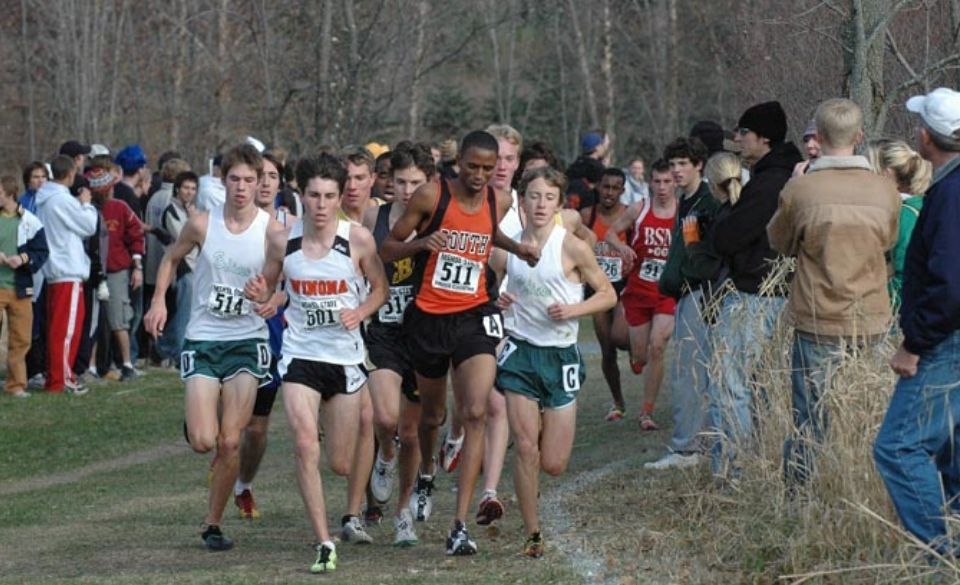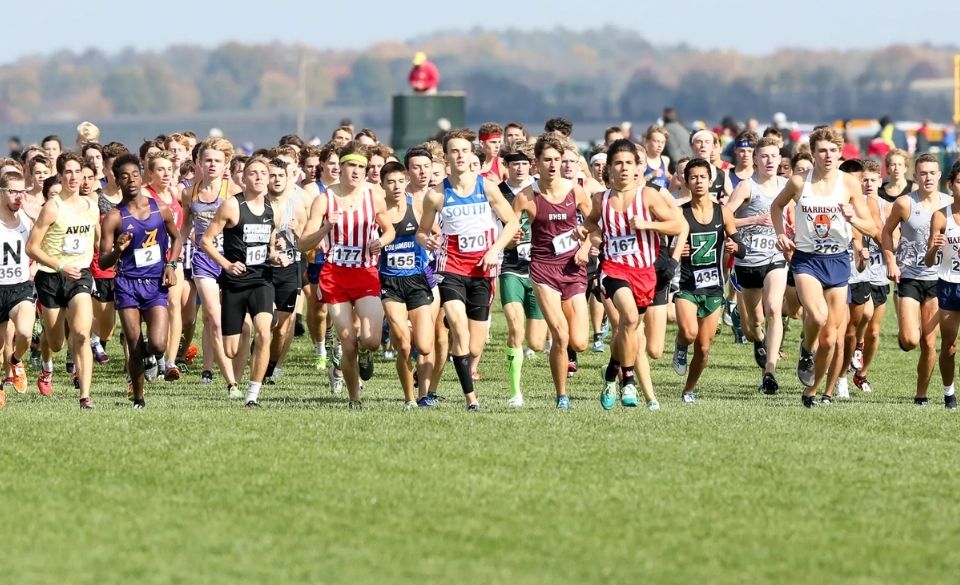
How Long Is A Cross Country Race? A Complete Guide
Page Contents
Cross-country running has long been a popular sport. It takes place outdoors on grass or rough terrain and usually combines some hurdles and rolling hills along the course.
In high school, you may have seen or competed in a cross country race with hundreds of other runners, competing as teams to win the cross country championship.
In this article, we discuss everything to do with cross country running and cover topics such as:
– What is cross country running
– How long is a cross country race
– Race distances
– Some training tips to get you started
So, if you are thinking about competing in a cross country race with your local club, read on for a complete guide.
What Is A Cross Country Race?
A cross country race is a running event in which runners compete against each other (and as teams) over natural terrain. This usually includes different types of terrain like grass, dirt, streams, and hurdles.
Both individuals and teams can partake in the event.
In the United States, harrier clubs, schools, and organizations typically put on the event in the fall or early winter. Because of this cross country runners can compete in a variety of weather conditions including, rain, sleet, and snow.
Open fields, forests, parks, and golf courses are all typical sites to hold a cross-country event.
Even though cross country running is similar to long-distance running events, it can sometimes be much more difficult than a road race, as the pace is consistently changing because of the terrain, and variation of heart rate along the course.
Most cross country runners compete in both road and cross country events because both types of runners perform well over longer distances (more than 8km).

History Of Cross Country
Cross country running has been around for years. Below is a brief history of cross-country running.
In 1838, English rugby players wanted a way to practice in the offseason. Because of this, they came up with the idea of an open race through rough terrain on foot. This unintentionally created what was the first modern cross-country run.
During this time more and more open cross country events started to appear. Most notably was the first planned cross country race at the 1912 Olympics. However, this was short-lived as extreme conditions caused many runners to get injured and lost along the course. After the 1924 Olympic Games where medals were awarded on an individual race basis as well as a national team points basis, the IOC decided to remove the sport from the Olympic games.
In 1973, the growth of cross country running made the World Athletics Association (formerly the International Association of Athletics Federations or IAAF) forced to host the first World Athletics Cross-Country Championships. This turned out to be one of the biggest events for the IAAF, featuring runners from all around the world. Still today, the World Athletics Cross-Country Championships continue to be the largest international cross-country event.
Today, cross country running is an integral part of school sport. Competitions run regularly through high schools and club events around the world. Most national bodies hold national cross country championships and regional and district championships.
Because cross-country is such a worldwide sport, many high-profile cross-country racers are trying to lobby for the event to be part of the Olympics again.
Cross-country Race Distances
Cross-country distances can vary depending on the competition age and event. However, most international competitions are longer than a club or harrier races.
International competition distances are set by the World Athletics association. Even though they may vary between an event, the cross-country tracks need to be at least twelve kilometers (7-8 miles) for men and five kilometers (3 miles) for women. These distances are usually made up of loops over a 2 km course, making it highly viewable for anyone watching.
In the united states, cross-country runners race over varying lengths. These events usually cover distances between eight and 10 kilometers for men and 5-6 kilometers for women.
However, most US high school events are shorter at five kilometers in length, and US middle school distances are two kilometers.
For most running clubs around the world, cross-country distances will vary based on the age of the competitors and the governing body’s regulations.
If you are still unsure how long is a cross country race in your country, speak to your athletics federation. They can help provide a list of distances based on age groups, such as:
– Under 9
– Under 11
– Under 13
– Under 15
– Under 18
– Under 20
– Senior Male
– Senior Women
– Veteran or Masters
Cross Country-training Tips
If you are interested in competing in your first cross country event, here are some basic tips to get you going:
Pick the correct clothing and shoes
Since a cross-country course can become wet, muddy, and slippery, it is vital to have the correct shoes. These can be either running spikes or an off-road running shoe. Both should provide enough grip for different conditions. Clothes that are breathable and allow you to run freely are recommended.
The most commonly used clothing is running shorts paired with a breathable singlet. However, for colder cross country races, you may need to wear an underlayer below the singlet or gloves to help keep you warm.
Just remember, you won’t be able to take off any clothing during the event, so make sure you pin your race number onto the clothes you plan to race with.
Practice on hills and replicate the course
Since cross country courses are run over uneven ground and include elevation changes. It is useful to start practicing on flat, hilly, and muddy trails. This can help you to get used to the changing of speed and prepare your feet for uneven terrain. Training on golf courses is a great way to vary the terrain and help prepare your legs and lungs for your first cross-country event.
Build a Base
Since cross country running is an endurance sport, you need to build up your aerobic fitness. This means you should focus on building a strong base of mileage.
Try to vary your pace in training
Because cross country courses upset your rhythm, it is vital to practice learning how to deal with speed change. Try to include some workouts on rolling terrain so your body can get used to a change of speed.
Alternatively reach out to a running coach or your local harrier club. They can both help give you some tips and tricks to prepare you for your first event.



